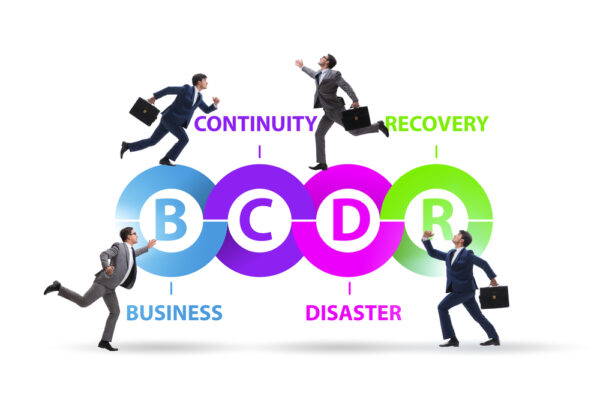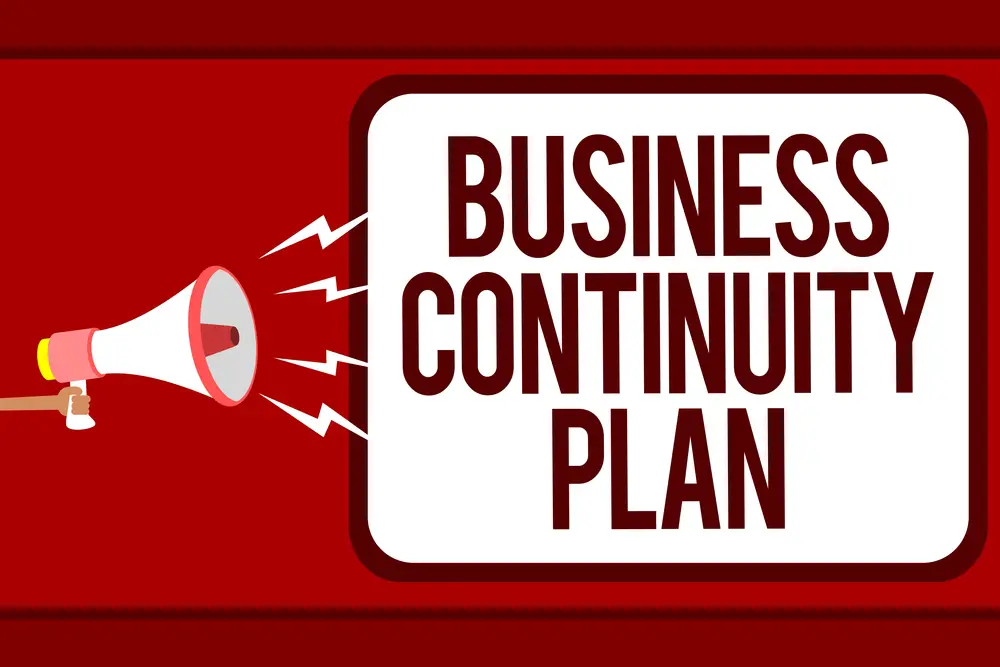In today’s rapidly evolving and interconnected world, balancing growth and risk has become increasingly challenging for businesses. Any unexpected event can lead to significant disruptions and financial losses, from natural disasters to cyber-attacks or even human error.
The business continuity planning process allows organizations of all sizes to thrive despite uncertainties. What about business continuity planning ensures what is the primary goal of business continuity planning? Let’s dive in and explore this crucial aspect of modern businesses.
At its core, the primary goal of business continuity planning is to enable an organization to continue its mission-critical operations as seamlessly as possible during and after disruptions, thereby minimizing downtime and reducing potential financial or reputational losses.
BCP is an ongoing, holistic process that encompasses planning, communication, and testing to ensure organizations maintain their competitive edge, retain customer trust, and preserve the well-being of their employees amidst unforeseen events.
What is Business Continuity Planning?
BCP is a proactive process that involves anticipating, preparing for, and responding to a range of potential disruptions to guarantee an organization’s ongoing business function and sustainability.
It isn’t a one-time project; rather, it is an ongoing effort encompassing risk management, data protection, and crisis response, ensuring business stability in the face of challenges big and small.
The Primary Goal: Maintaining Critical Operations
The ultimate goal of business continuity planning is to secure the ongoing functionality of critical business processes during disruptive events–whether they are short-term or long-lasting incidents especially for financial industry regulatory authority.
What Is a Business Continuity Strategy?
Business continuity strategies are plans that help organizations prepare for, respond to, and recover from unexpected events or disasters. These business recovery strategies outline the structure of how to prevent, respond and recover from a disaster and approach recovery with a focus on minimizing disruption and restoring operations as quickly as possible.
The first step in creating a business continuity strategy is to conduct a business impact analysis (BIA). This process helps identify time-sensitive or critical business functions and processes and the resources that support them.
Once key business functions are identified, these functions can be prioritized based on their importance to the organization. The BIA also helps determine what resources are needed to keep operations running during an emergency.
Once the BIA has been completed, organizations should create a plan that outlines how they will respond to various types of emergencies. This plan should include steps for preventing potential disasters, responding quickly when they occur, and recovering operations afterward. It should also include communication procedures for employees and customers during an emergency.
Organizations should also consider developing a risk management strategy that identifies and outlines ways to mitigate risks. This can help minimize the impact of any disruptions that do occur.
Additionally, it is important for businesses to review their business continuity plans regularly to remain up-to-date with technological or process changes.
Some people think of continuity strategy as an aspect of planning. Business continuity planners describe a business plan’s overall strategy and emergency survival procedures.
What is the primary goal of business continuity planning? It is simpler than you think
Do people remember their Scouts’ motto? Always prepare? Business continuity plans are designed to provide measurable, actionable, and proactive plans for any eventual event.
This may be a disaster or unforeseen event, including cyber-attacks or other types.
Key Elements of Business Continuity Management
Business continuity management plans have several key components which serve as essential tools to ensure your plan succeeds and that you maintain and improve your plan regularly.
Business continuity management (BCM) is a holistic process that identifies potential threats to an organization and the impacts those threats may have on business operations.
It involves developing, testing, and improving plans and procedures to enable an organization to continue operating during a disaster or disruption. BCM helps organizations prepare for and respond to any type of incident or crisis that could affect their operations.
The key elements of BCM include:
Risk Assessment: Identifying potential risks to the organization and assessing their impact on operations. This includes understanding the likelihood of a risk occurring as well as its severity.
Impact Analysis: Analyzing how different types of incidents would affect the organization’s operations, including its people, processes, technology, and facilities.
Business Continuity Plan: Develop plans and procedures that will enable critical services of the organization to continue operating in the event of a disruption or disaster. This includes identifying critical functions and processes, determining alternative methods for performing them, and establishing recovery timelines.
Testing & Training: Regularly testing the crisis communications plan to ensure it is up-to-date and effective; training personnel on how to use it; and ensuring everyone understands their roles in responding to a crisis.
A successful BCP will include:
1. Risk Assessments and Strategies: Identifying potential threats and determining the most effective approach to minimize their impact.
2. Disaster Recovery Plans: Establishing clear steps to restore essential functions, from salvaging crucial data to securing alternate operational locations.
3. Communications Management: Ensuring open channels of communication with employees, customers, suppliers, and business partners during a crisis to keep all informed and engaged.
4. Testing and Maintenance: Simulating crisis scenarios to identify weak spots, then fine-tuning the plan and training employees to ensure the company’s resilience.
Business continuity planning is essential to safeguarding your investment, not just in the face of major disasters but also for any unexpected hiccup along the way.
Key Components of a Robust BCP Strategy
To understand the primary goal of business continuity planning further, let’s take a closer look at its vital components:
1. Risk Assessment:
Identifying potential threats and vulnerabilities is the first step in building a successful BCP. This includes thoroughly analyzing an organization’s resources, operations, and critical assets, enabling the business to detect risks and prioritize potential threats.
2. Business Impact Analysis (BIA):
A BIA helps businesses determine the severity of potential disruptions and associated financial losses. This process involves estimating the impact on customer satisfaction, regulatory compliance, and overall company performance to derive a comprehensive picture of the organization’s risk profile.
3. Recovery Strategies:
Armed with insights from risk assessments and BIAs, businesses can develop appropriate action plans to ensure operational continuity during and after disruptions.
This may involve adopting alternative processes, advanced technology, or finding workarounds to meet essential business demands.
4. Communication and Crisis Management:
Effective communication is a critical aspect of BCP. Organizations should define clear communication channels and designate roles within management structure to ensure smooth coordination during times of crisis. With a reliable crisis management team, businesses can swiftly adapt to unexpected situations and make well-informed decisions.
5. Testing and Maintenance:
Revisiting and testing your BCP frequently is the key to success. Regularly reviewing and updating your plan can help you stay prepared for shifts in the business landscape, technological advancements, and emerging threats.

Reaping the Benefits: Why it Matters
A comprehensive BCP can lead to an array of benefits, including enhanced stakeholder confidence, improved decision-making, better risk management, and long-term growth.
Investing in a robust BCP and aligning it with the organization’s objectives, businesses can weather disruptions and become more agile, adaptable, and resilient – a true indicator of success in today’s dynamic world.
In conclusion, the primary goal of business continuity planning is to empower organizations with the tools and strategies to navigate through uncertain times gracefully.
As businesses thrive amid unprecedented challenges, embracing BCP as an indispensable part of your corporate strategy might just be your key to staying ahead in the game.
Business Continuity Planning Steps
The Business Plan for Continual Use includes procedures for the management of disruption of business operations. The effort is equally important for big or small businesses to create plans. Simple plans are more important. Business continuity plans generally include the following steps:
The first step is initiation. This involves identifying the plan’s scope, understanding the risks associated with potential disasters or other business disruptions, and determining who will oversee the process.
The second step is a business impact analysis (BIA). This involves assessing how different disasters or disruptions could affect your business operations. It also includes identifying critical functions and dependencies that must be maintained in order to restore business functions and keep your business running.
The third step is developing a plan. This includes creating policies and procedures for responding to different types of disasters or disruptions and establishing alert levels and monitoring systems to help identify potential threats before they become serious issues.
The fourth step is implementing the strategy and plan. This includes training employees on how to respond in emergencies, cross-training staff to cover critical functions if necessary, and establishing communication protocols to keep everyone informed during a crisis.
Finally, it’s important to test and maintain your plan on an ongoing basis. Regularly review your policies and procedures to make sure they are up-to-date with current best practices, conduct drills to practice emergency response scenarios, and update your contact list so you have accurate information when needed.
Recovery Strategy
Those strategies seek to recover business profit losses from the catastrophe. In the Recovery Strategy, companies must identify losses and determine resources that are needed for recovery.
They should also mention the speed and scope of the resources required to acquire them. In terms of resources, you should think about whether the resources need building up or acquisition. Assurances or guarantees back it up. A critical business process must also be viewed.
Benefits of Business Continuity Management
According to Engemann, companies that invest heavily in business continuity management have several important benefits.
It helps organizations identify potential threats and vulnerabilities, develop plans to address them and ensure that operations can continue during a disaster or other disruption.
BCM involves assessing risks and developing strategies to mitigate them. This includes identifying critical processes, resources, and personnel; establishing recovery objectives; creating backup plans; and testing these plans regularly.
BCM also involves training employees on how to respond to emergencies when disaster strikes and developing policies for communication with customers and stakeholders.
A comprehensive BCM plan can help businesses stay resilient in the face of disruption. It can also help reduce downtime and financial losses due to unexpected events. Additionally, having a BCM plan in place may be necessary for compliance with certain regulations or industry standards.
Overall, business continuity management is essential for any organization looking to protect its operations from potential disruptions.
What does a business continuity plan typically include?
A business continuity plan (BCP) typically includes the critical information an organization needs to continue operating during an unplanned disruption.
This information can include procedures and instructions for responding to a disaster, such as fire, flood, or cyberattack; a business impact analysis that identifies time-sensitive or critical business functions and processes; and the resources needed to support them.
Additionally, a BCP should outline how the organization will restore operations after the disruption has ended.A BCP can explain how your entire business” can recover during a disaster or setback.
Key benefits of business continuity planning
t helps organizations prepare for and respond to unexpected disruptions, such as natural disasters, cyber-attacks, or other emergencies. By having a plan in place, businesses can minimize the impact of these events and ensure that their operations continue to run smoothly.
The key benefits of business continuity planning include:
Reduced downtime: Business continuity planning helps organizations identify potential risks and develop strategies to minimize the impact of those risks on their operations. This means that if an emergency occurs, the organization can quickly restore operations and reduce downtime.
Improved customer service: An organization having a plan in place, is better able to respond to customer needs during an emergency situation. This allows them to maintain customer loyalty and trust even during difficult times.
Increased efficiency: Business continuity plans help organizations identify areas where they can improve their processes and procedures so that they can become more efficient in the long run. This can lead to cost savings and improved productivity over time.
Enhanced business reputation: Having a well-developed business continuity plan shows customers and stakeholders that the organization takes its responsibilities seriously and is prepared for any eventuality. This can help build trust with customers and boost the organization’s reputation in the marketplace.
Business continuity planning is essential for any organization looking to protect itself from unexpected disruptions or emergencies.
The Costs of Business Continuity Management
The cost of business continuity management depends on several factors, such as the size and complexity of the organization, the type of plan needed, and the resources available.
Generally speaking, larger organizations will require more resources and may need to invest more money into their business continuity plans. Smaller organizations may be able to get away with less expensive solutions through continuous business operations.
Organizations should also consider the potential costs of not having a business continuity plan. According to research from Gartner, businesses can expect downtime costing an average of $400,000 an hour if they do not have a plan in place.
Additionally, 35 percent of companies this size experience at least one hour of downtime each year due to unplanned events or disasters. These costs can quickly add up over time and could potentially cripple an organization if it is unprepared for such events.
When creating a business continuity plan, organizations should consider both the upfront costs as well as potential long-term savings that could be realized by having a plan in place.
Cloud Endure found that organizations with a daily cost of downtime of less than $10,000 spend less than $10,000 annually on their business continuity plans. Ongoing Operations estimates that each component ranges from $5k to $25k when bundled together or $10k to $40k when purchased separately.
A successful business continuity strategy will require considerable investment in your time and resources. However, some report says an annual loss of business could be as high as $2.7 million.
An outline of recovery objectives specific to your business
It’s important for people to know the best way to recover money to minimize losses. BCPs include establishing recovery points objectives and recovery time objectives, period targets to which things are to be restored, and time to restore these.
An up-to-date disaster recovery plan and redundancies
Disaster recovery is part of business continuity plans and requires periodic reviews for the inclusion of new technologies. Best practices are also considered. Creating a comprehensive disaster recovery business communication plan checklist will help maintain complete data security and operational integrity.
If you use cloud-based platforms, it can be difficult to assume that the solution was designed to perform without the knowledge that it is reliable. This is why periodic testing is necessary for a successful operation. The right catastrophe recovery data backup solution will fit your needs.
Business Continuity Management Policy Statement
Business continuity policies are written documents describing the business continuity plan. All employees must receive the policy statement, sign it, and approve its approval from their senior management.
Primary Things Your Organization’s Business Continuity Management System Should Accomplish
Although your business continuity software will feature many features, you need some basic things to consider for its operation. BCM systems may help reduce the likelihood and cost of disasters.
In summary, planning refers to the decision to determine critical recovery processes, equipment, and tools and apply the necessary recovery strategies.
The Importance of Senior Organizational Leaders Strongly Supporting Your Business Continuity Management and Planning
For success, your senior managers will need support in your organization’s Continual Improvement Plans. These roles are vital when disasters, including terrorism, cyclones, and earthquakes.
Make sure that management is committed to establishing and implementing business continuity and crisis recovery programs.Such programs will not be successful without top-down support and funding.
Cultivating Awareness of Business Continuity Plans
No one can know about a successful business continuity solution. The good idea is to involve specific business unit continuity managers at cross-functional planning meetings to help them represent a business continuity perspective.
You can also test it once. There is a business continuity plan template that your business continuity team can use. Business continuity institute recommends using business continuity management software to maintain continuous business operations and calculate recovery point objectives.
How to test business continuity plans
Several tests may help you assess your plan’s effectiveness. In addition to preparing these test plans, you must ensure that the necessary details, such as contact info, are included in the plan. A phone number problem can cause high costs to get it right but may ultimately cause a delayed response.
Business Continuity Plan Test Types
Testing ensures you have an efficient plan and offers training for participants. Assuming the best possible communication, bring vendors and others to the exercise. Likewise, include local emergency preparedness officials where necessary. It is possible to test differently – each requires more planning, resources, and focus. You can do drills at different levels. Keep a record of what happens during a test.
Conclusion
Overall, it is clear that business continuity planning is an essential component of the success of any organization. It allows organizations to plan and prepare for whatever potential disasters or disruptions may come their way.
Planning and creating a detailed plan can help keep businesses up and running in the face of adversity so they don’t risk losing any customers or clients. Furthermore, having a professional IT staff handle the planning more effectively can be extremely beneficial when things go wrong.
Preparing beforehand is a major part of avoiding disruption in disaster-related scenarios, and knowledge about it should be mandatory for all business professionals. When done properly, business continuity planning can be a key factor for successful operations, even under the most difficult conditions.
As such, it should always be on the priority list for senior management within an organization to ensure its sustainability in times of hardship.

Chris Ekai is a Risk Management expert with over 10 years of experience in the field. He has a Master’s(MSc) degree in Risk Management from University of Portsmouth and is a CPA and Finance professional. He currently works as a Content Manager at Risk Publishing, writing about Enterprise Risk Management, Business Continuity Management and Project Management.



